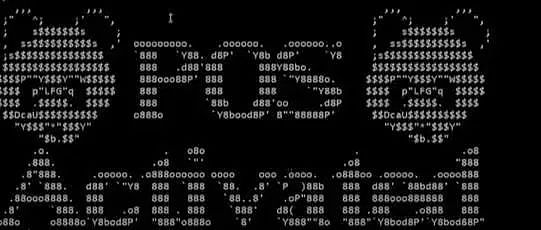The Ethereum network, which is becoming increasingly distant from individual entities after the merge.
The Ethereum network is growing further away from individual entities after the merge.On September 15, 2022, at 14:44, Ethereum officially completed the merge. With the panda displayed on the screen and the words “POS Activated,” a new era has arrived. The original execution layer of Ethereum is combined with the new Proof of Stake (POS) consensus layer, abandoning Proof of Work (POW) and eliminating the need for energy-intensive mining. Energy consumption has been reduced by about 99.95%, and individual nodes of Ethereum have also been eliminated.

The requirement for a single staking node in the Ethereum network converted to POS is 32 ETH. Even at a low price of $1,000 per ETH, this amounts to $32,000, which is an unaffordable price for most participants. Therefore, most people have turned to pool staking and centralized exchanges, entrusting their Ethereum to larger entities for safekeeping. Currently, there are four ways to stake Ethereum:
- Movie ‘All or Nothing Unveiling a Corner of the Iceberg of Virtual Currency Investment Fraud
- WSJ Opinion Why the US government should support stablecoins? Can strengthen the international status of the US dollar
- Messari Worth paying attention to the consumer-oriented encryption field, AI agents, decentralized social networking, blockchain gaming…
-
Individual staking: Run your own hardware and stake 32 ETH to become a validator.
-
Staking as a service: Stake 32 ETH but pay someone else to run the hardware.
-
Pool staking: Stake less than 32 ETH in a validator pool. Some mining pools provide ERC-20 liquidity tokens to represent staked ETH.
-
Centralized exchange: Stake less than 32 ETH on a centralized exchange, the simplest option.
Among these four methods, staking on centralized exchanges is the most directly subject to government regulation and the most susceptible to influence by a single will. Mining pools mitigate risks by increasing the number of node operators and running multiple validator sets. Lido, as a representative, also adopts various methods to reduce its centralization risk and chooses to use distributed validator technology to maximize the reduction of risks associated with malicious behavior by a single operator, and so on. However, ultimately, these institutions, like centralized exchanges, are still legal entities that are subject to the risk of regulatory authorities.
So, what if we change our approach and return the right to validate to the users?
The first and foremost issue is the funding problem. Only by lowering the requirement for ETH staking can more people participate. Secondly, simplifying the operation is crucial. Ethereum randomly selects validators to construct and propose blocks and randomly selects a validator committee to attest to these blocks. Any validator who fails to fulfill these responsibilities when required will face economic penalties. Validators who commit more severe violations, such as proposing two different blocks for the same slot or attesting to two different proposers for the same block, will face more severe punishment, known as “slash.” Node operators, as professionals, can minimize the risks, but it is not realistic for ordinary people to spend a significant amount of time and effort to avoid duplicate signatures to prevent slash. Therefore, a tool that lowers the staking threshold and automatically prevents slash is the best choice for ordinary people to set up validation nodes.
Of course, the Ethereum Foundation also attaches great importance to and funds the development of such technologies. Secure_Signer technology is one of them, which can avoid slash to the greatest extent. Secure-Signer is an independent implementation of ConsenSys’s Web3Signer remote signing tool, which aims to prevent two types of failures that may cause slash.

-
User error: By preventing access to the validator’s private key (even to the operator of the validator), slash caused by poor key management can be completely avoided.
-
Client error: If the consensus client of the validator is hacked or suffers from a failure that causes slash, Secure-Signer acts as a backup because the final signing operation is executed in a secure and isolated enclave.
Puffer finance is a pioneer in helping individuals regain the power to build Ethereum staking. The threshold for staking has been reduced to 2ETH, relying on secure-signer technology to prevent slash, and building restaking services on eigenlayer to provide validation and protection for other networks, thereby enhancing economic potential. With the launch of Secure-Signer, validators of various sizes are encouraged to contribute to the security of the Ethereum network through Puffer Pool. The protocol implements innovative solutions such as permissionless Delegated Threshold Validators (pDTV) and secure routers, which are used for efficient inactive management and effective transaction delegation, respectively.
To prevent slash that may be caused by double signing, secure signers generate and protect all BLS validator keys in their encrypted and tamper-proof memory. These keys can only be accessed at runtime and remain encrypted in the static state, making it inaccessible to NoOps unless used to sign irrevocable block proposals or proofs.
Given that the keys are securely encrypted and bound to secure signers, they can prevent misuse between multiple consensus clients, thus protecting NoOps from unintended slash caused by double signing. In addition, if their system is attacked, the keys are properly protected from hackers.
The integration of the new exchange brings strict security improvements, protecting honest NoOps from serious criminal activities. In the rare case of malicious NoOp breaking SGX, they only discover their validator private keys, thus ensuring the security of the mining pool is not compromised. Remote Attestation Verification (RAVe) confirms that NoOps are using secure signers, cultivating a trusted and transparent environment throughout the ecosystem.
Puffer also charges only 2.5% protocol fees. Compared to Rocketpool’s 15%, Lido’s 10%, Frax Eth’s 10%, and centralized exchange staking services (which can charge up to 25%), this is much lower.
After the Shapella upgrade, liquidity staking protocols such as Lido have seen significant growth. Lido, as a leader among them, currently occupies 31.7% of the market share, far surpassing competitors such as Coinbase and Binance, and far beyond the market cap set by Vitalik. And the members of the Lido DAO are also allowing Lido to strengthen its monopoly position, as a proposal to limit the size of Lido was opposed by 99.81% of participants.
We urgently need new participants to change this situation, including Puffer. Will the latest participants in this race become the heroes who slay the dragon?
Everything is unknown.
We will continue to update Blocking; if you have any questions or suggestions, please contact us!
Was this article helpful?
93 out of 132 found this helpful
Related articles
- opBNB hard fork upgrade on August 14th, can MEKE become the biggest winner?
- In-depth understanding of Intent Centric What exactly is it? Why is the kernel of the Intent layer considered programmable?
- Why should we pay attention to the stability of LianGuaiyLianGuail in the entry of stablecoins?
- On the eve of Cancun’s upgrade, taking a look at the world of zkEVM in Ethereum.
- The past, present, and future of Cancun’s upgrade
- Interpreting the potential profit opportunities of Base Velodrome, DackieSwap, Baseswap…
- Opinion GMX v2 will become a bigger cornerstone than GLP.






